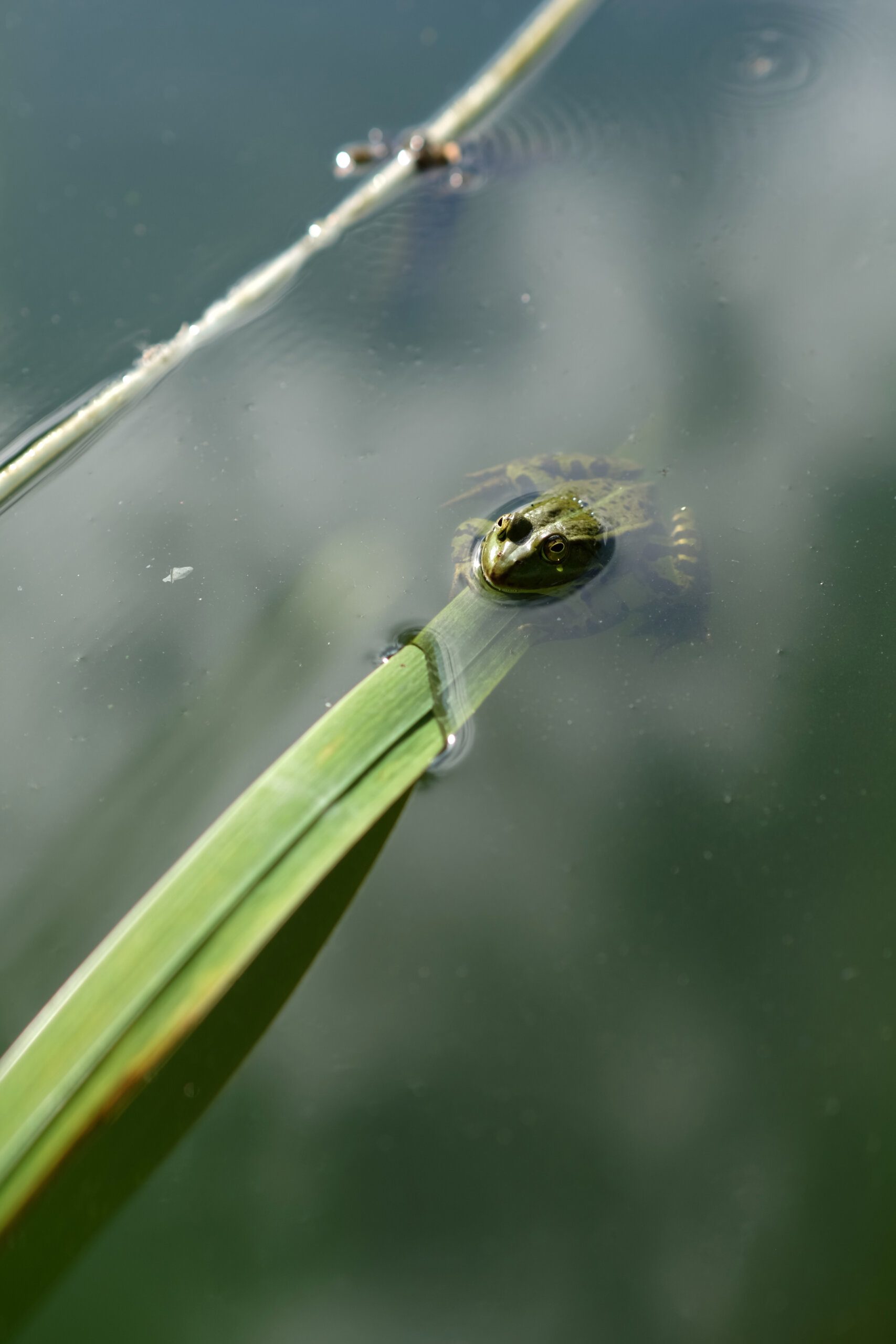Imagine a capybara, the world’s largest rodent, sitting calmly in a hot spring with a serene expression on its face. Now, picture this same capybara covered in slices of vibrant yuzu fruit, adding a burst of citrus to its already adorable appearance. Yes, you read that right – the phenomenon of the “Yuzu-Covered Capybara” has taken social media by storm, leaving people captivated by the unlikely combination of this gentle giant and the tangy Japanese fruit. But what is the story behind this delightful image? How did it come to be? In this article, we will take a closer look at the unexpected rise of the Yuzu-Covered Capybara and discover why it has captured the hearts of people around the world.

The Yuzu-Covered Capybara
What is a Capybara?
Capybaras are the largest living rodents in the world and are native to South America. They have a unique appearance, resembling a giant guinea pig but with a stockier build and webbed feet. These fascinating creatures can grow up to 4 feet in length and weigh as much as 150 pounds, making them an impressive sight to behold.
Physical Description
Capybaras have short, dense fur that ranges in color from reddish-brown to dark brown. They have a barrel-shaped body, with a large head and eyes positioned on top, giving them excellent visibility while in water. Their ears are small and rounded, and their snout is blunt and rounded, making them adept grazers.
Habitat and Distribution
Capybaras are semi-aquatic animals that thrive in wetland habitats, such as swamps, marshes, and riverbanks. They are highly adaptable and can be found in various countries across South America, including Brazil, Colombia, Venezuela, and Argentina. These herbivorous mammals have evolved to thrive in the tropical and subtropical regions of their habitat, making them a vital part of these ecosystems.
Behavior and Social Structure
Capybaras are extremely social animals and are known to live in large groups called “herds” or “capybara communities.” These groups can consist of up to 100 individuals and are composed of both males and females. Capybaras are also highly vocal and communicate through various vocalizations, including barks, whistles, and purrs. Their social nature and complex communication systems make them intriguing creatures to study.
What is Yuzu?
Introduction to Yuzu
Yuzu is a citrus fruit native to East Asia, particularly Japan. It is a small, round fruit that resembles a grapefruit but has a distinctively bumpy skin. Yuzu has been cultivated for centuries in Japan and is highly regarded for its unique aroma and flavor. It is commonly used in culinary applications, traditional medicine, and even in bathing rituals.
Characteristics and Flavor Profile
Yuzu has a vibrant yellow or orange-yellow skin that is rich in essential oils, giving it an intense citrus fragrance. The flavor of yuzu is often described as a combination of lemon, mandarin, and grapefruit – tart, tangy, and slightly floral. Its complexity and unique taste make it a sought-after ingredient in many traditional Japanese dishes.
Culinary Uses of Yuzu
Yuzu is a versatile ingredient and is utilized in a wide range of culinary applications. Its juice, zest, and even the peel can be used to add a burst of flavor to various dishes. Yuzu juice is commonly used to enhance marinades, dressings, sauces, and desserts. The zest is often added to salads, seafood, and noodle dishes, providing a refreshing and citrusy aroma. Furthermore, yuzu peel is frequently used in making yuzu tea, a popular beverage in Japan.

The Connection between Capybaras and Yuzu
Capybaras’ Attraction to Yuzu
It may be surprising to learn that capybaras are highly attracted to the scent of yuzu. When exposed to yuzu, capybaras have been observed to display curious behavior, showing a strong interest in the fruit. This attraction seems to be rooted in their natural instinct to seek out novel scents and flavors in their environment.
Capybara-Yuzu Interaction in the Wild
In their natural habitats, capybaras often encounter yuzu trees that grow near rivers and wetlands. When the yuzu fruit falls into the water, capybaras have been observed swimming towards it and showing a keen interest in consuming it. This interaction between capybaras and yuzu highlights the intriguing connection between these two seemingly unrelated entities.
Observations and Studies
Researchers have conducted studies to better understand the capybara-yuzu interaction and its implications. The studies have shown that the scent of yuzu has a calming effect on capybaras, helping to reduce stress levels and promote relaxation. This unique relationship has sparked interest in further exploring the potential benefits of yuzu for capybara health and well-being.
Benefits of Yuzu for Capybaras
Nutritional Value of Yuzu
Yuzu is not only enticing to capybaras but it also offers several nutritional benefits. This citrus fruit is rich in vitamins, particularly vitamin C, which is essential for a capybara’s immune system and overall health. Additionally, yuzu contains fiber, potassium, and antioxidants that promote digestion and boost the capybara’s overall well-being.
Antioxidant and Anti-inflammatory Properties
The high concentration of antioxidants in yuzu, such as flavonoids and vitamin C, offers protection against oxidative stress and inflammation in capybaras. These properties contribute to the prevention of chronic diseases and can help alleviate conditions such as arthritis or other inflammatory disorders that capybaras may face.
Improved Digestion and Immune System
Yuzu’s natural acidity aids in digestion by stimulating the production of digestive enzymes. This is particularly beneficial for capybaras, as their diet primarily consists of plant material. Furthermore, the vitamin C in yuzu boosts the capybara’s immune system, protecting it from pathogens and ensuring a healthy and active lifestyle.

The Cultural Significance of Yuzu in Japan
Historical Background of Yuzu in Japan
Yuzu has a long history in Japan and holds great cultural significance. It is believed to have been introduced to Japan during the Tang Dynasty in China and has since become an integral part of Japanese cuisine and traditions. Yuzu cultivation and its usage have been passed down through generations, leading to its deep-rooted association with Japanese culture.
Symbolism and Festivals
Yuzu is often associated with good luck, prosperity, and warding off evil spirits. It is commonly used as a decorative fruit during special events and festivals, such as the winter solstice and New Year celebrations. Yuzu baths, known as yuzu-yu, are a traditional practice during the winter season, symbolizing purification and rejuvenation.
Traditional and Medicinal Uses
In addition to its culinary uses, yuzu has been used in traditional medicine in Japan. Yuzu peel is believed to have healing properties and is used in herbal remedies for cold and flu symptoms. The aromatic nature of yuzu is also utilized in aromatherapy to promote relaxation and relieve stress.
Yuzu as a Popular Ingredient in Japanese Cuisine
Yuzu in Traditional Dishes
Yuzu is a prized ingredient in Japanese cuisine, adding a unique and vibrant flavor to a wide range of dishes. It is often used in hot pots, soups, and stews to provide a refreshing citrusy twist. Yuzu zest and juice are also used in dressings, marinades, and dipping sauces, enhancing the overall flavor profile of various dishes.
Yuzu-Flavored Beverages and Desserts
Yuzu’s distinctive flavor has made it a popular choice for beverages and desserts in Japan. Yuzu-infused drinks, such as yuzu tea and yuzu lemonade, offer a refreshing and invigorating experience. Yuzu is also incorporated into desserts like cakes, tarts, and sorbets, imparting a delightful tanginess and fragrance.
Yuzu-Based Sauces and Seasonings
Yuzu-based sauces and seasonings are widely used in Japanese cuisine to add depth and complexity to dishes. Yuzu kosho, a condiment made from yuzu zest, chili peppers, and salt, is a popular accompaniment to grilled meats and seafood. Ponzu sauce, a citrus-based sauce made from yuzu juice, soy sauce, and vinegar, is commonly drizzled over sashimi, salads, and hot pot dishes.
Yuzu-Infused Bathing and its Effect on Capybaras
Onsen Culture in Japan
In Japan, bathing is not just a means of cleanliness but also a cultural ritual known as onsen. Onsen refers to hot springs, which are believed to have therapeutic properties. Soaking in an onsen is considered a rejuvenating experience that promotes relaxation and overall well-being.
Yuzu Bath Benefits for Capybaras
Yuzu-infused baths, known as yuzu-yu, have gained popularity in Japan as a winter tradition. The aromatic oils in yuzu fruit are believed to have calming and revitalizing effects on the body and mind. When capybaras are introduced to yuzu baths, they exhibit signs of relaxation, reduced stress, and increased overall vitality.
Relaxation and Stress Reduction
The scent of yuzu has been shown to have a positive impact on the stress levels of capybaras. Yuzu’s aromatic properties create a soothing environment, alleviating anxiety and promoting a sense of calmness. This relaxation ultimately contributes to the capybara’s overall well-being and is beneficial for their mental and physical health.
Yuzu-Covered Capybara as an Artistic Inspiration
Capybara Yuzu Art Installations
The unusual connection between capybaras and yuzu has inspired artists to create unique and captivating installations. These installations often feature capybara sculptures adorned with yuzu fruit, creating a visually striking and thought-provoking representation of the bond between these creatures and the fruit.
Yuzu-Influenced Capybara Sculptures
Capybara sculptures that incorporate elements of yuzu, such as its scent or visual appearance, have gained popularity in artistic circles. These sculptures not only highlight the connection between capybaras and yuzu but also serve as a testament to the creative and imaginative potential of these two subjects.
Photography and Other Art Forms
The sight of a capybara covered in yuzu has also become a popular subject for photographers and other visual artists. The juxtaposition of the capybara’s natural form and the vibrant colors of yuzu creates visually stunning imagery that captures the essence of this unique relationship.
The Impact on Capybara Conservation
The connection between capybaras and yuzu has garnered attention and interest in capybara conservation efforts. As people become more aware of the importance of capybaras in their ecosystems, initiatives to protect their natural habitats and ensure their survival have gained momentum. Understanding the relationship between capybaras and yuzu may provide insights into their ecological needs and enable more effective conservation strategies.
Conclusion
The yuzu-covered capybara represents a fascinating intersection of nature, culture, and art. The unexpected attraction capybaras have towards yuzu has shed light on the potential benefits of this citrus fruit for their well-being. Yuzu’s nutritional value, antioxidant properties, and stress-reducing effects have the potential to positively impact capybara health. Furthermore, the cultural significance of yuzu in Japan and its popularity in Japanese cuisine has elevated the status of capybaras, leading to increased interest in their conservation. This unlikely connection between capybaras and yuzu serves as a reminder of the intricate relationships that exist in the natural world and the potential for unexpected connections to inspire creativity and promote conservation efforts.



